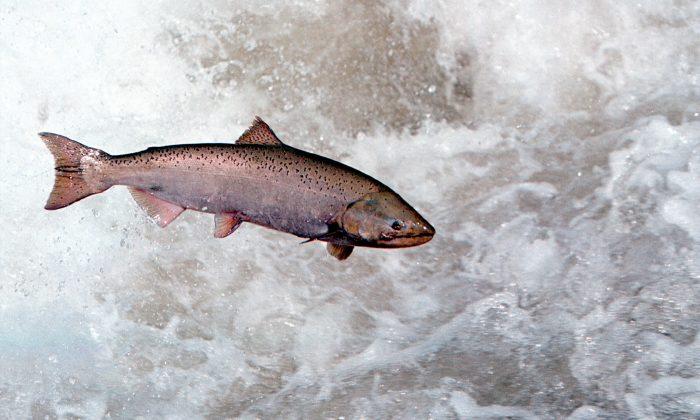In September, over 53,000 ill and at least four deaths were reported in China from consuming the toxic chemical in milk products. The outbreak has raised concerns worldwide and exposed a gaping hole in the U.S. government’s ability to monitor and test imported products with milk or milk derivatives in them.
The FDA has increased inspections and product testing at ports of entry in response. But critics of the FDA, which inspects less than one percent of imports a year, say the safeguards are not enough to protect consumers.
“Product liability is protecting us more than what the FDA is doing,” says Carl Nielsen, former Director of Imports for the FDA from 1999-2005. “It is an awful lot of ‘buyer beware’—you want to be educated. There’s so little known from the foreign markets.”
To date, the FDA has issued import alerts for at least 10 different products from four Chinese manufacturers thought to be contaminated with melamine. The FDA tests some products, but also relies in part on Customs and Border Patrol and state-level agencies to monitor and test products for melamine.
Nielsen says that the FDA’s culture of “find the bad stuff” is a reaction based on perceived risk. “They find the bad stuff just by tripping over it, not because they have any great mysterious strategic capability” says Nielsen. “They find a problem, then they’ll put it up in an import alert, which is on the web, and there are about 265 of them. That ends up being the primary criteria for being on the hunt for bad stuff—stuff that’s already been found. It doesn’t mean the other 99 percent is okay.”
Nielsen says the FDA doesn’t know what the other 99 percent is, and its system of checks and balances for food safety is based on laws written when the U.S. was basically self-sufficient within its own borders.
“There’s going to have to be a radical change in organization funding and staffing [in the FDA],” says Nielsen. “In six years as Director of Import Operations, nobody could give me a roster of people working full time in import operations. Because of the way it is set up, there are very few working full time.”
He adds that trusting milk-based and derived products from China could be a risk without verifying their quality and safety.
“Part of the fallacy is that people will throw out the notion ‘trust but verify’,” says Nielsen. “In certain circumstances I think you first have to verify to build the trust. I think China is a perfect example of that.”
Health Impacts of Melamine
According to the FDA, melamine is a compound mainly used in commercial and industrial applications, and has no approved use in human or animal food in the U.S.
There is little-to-no reportable medical research data on the effects of melamine on human beings. Studies of the effects on animals were begun in the wake of the Chinese melamine pet food scandal last year, but human cases have been reported starting only in September. There is no commercially available test to check for melamine poisoning in a human, but the tens of thousands of cases in China have shed some additional light on its impacts on people.
“The main problem is that it can lead to fatal kidney stones,” says Dr. Naimish Pandya, medical oncologist with the University of Maryland’s Greenbaum Cancer Center. “It has been known to cause bladder and kidney damage as well as reproductive damage.”
Dr. Pandya adds that cases of bladder cancer from melamine in animals also provide some clues to what humans might experience if they are poisoned. He points out that bladder cancer is typically asymptomatic, but someone afflicted might have blood in their urine. But kidney stones, which have been found in many babies in China, do cause symptoms.
“The typical kidney stones will cause pain that starts usually in the flank area and radiate down to the groin,” Dr. Pandya. “They can also cause nausea and vomiting.” Insomnia could also result from the pain, he added.
Ignorance of Foreign Markets
At least 41 countries around the world have either completely or partially blocked the import of products from China which may contain melamine. Although the FDA is monitoring some imports from China, there are serious questions about their effectiveness.
“The fact is the FDA has no clue what’s going on in really any of these markets,” says Benjamin England, a former FDA attorney, 17-year veteran of the Agency, and founder of FDAImports.com, a regulatory consulting firm. “The fact is that the Chinese market is a really, really big one, and there happen to be some distinct differences between the way the U.S. government regulates and the way the Chinese government regulates.”
England adds that problems the import market is experiencing now should not come as a surprise. “There’s always been the risk that as the Chinese market grows, that there would be these kind of issues,” says England.
Districts with FDA inspectors can detain suspect products without physical examination, and products cannot be released until the results of a third-party laboratory analysis have been submitted to the FDA.
However, the FDA does not approve, regulate, enforce standards upon, or certify the labs that suspect importers can use. Because of this lack of regulation, unqualified or unscrupulous laboratory operators could enable the release of dangerous product into the U.S. foodstream.






